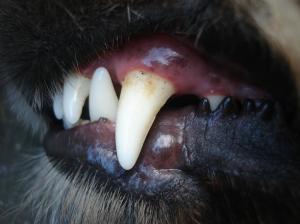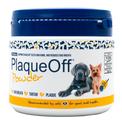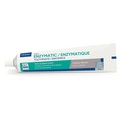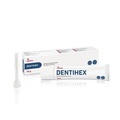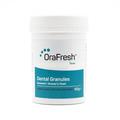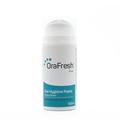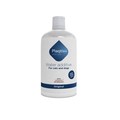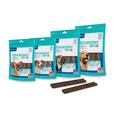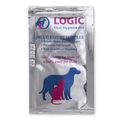Brushing our teeth is part and parcel of our everyday routine and most of us wouldn't consider going a day without doing them. Why then should we expect our pets to be comfortable going days on end without having their teeth cleaned? Every day our mouths are subjected to millions of different germs, whether it’s from eating food or chewing pen ends and fingernails, and this is really no different for dogs whose days are also spent eating and chewing.
They might not be able to tell us if their mouths are hurting, but by checking regularly we should be able to detect inflammation for ourselves. Observing good oral hygiene is not just about preventing yellow teeth and bad breath, but avoiding more serious health implications such as heart, liver, and kidney disease, which both humans and dogs can develop. Mouth cysts and tumours can also appear where oral hygiene is poor and these can be extremely uncomfortable and can make eating difficult.
Pet dental health tips:
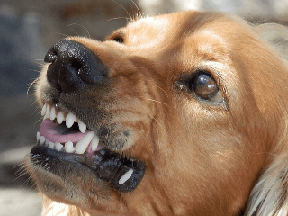 Ideally, dogs should be introduced to brushing from an early age so they get accustomed to regular cleaning and learn not to fear it. In fact, if the process is positively reinforced with praise and rewards, your dog should actually come to enjoy it! Like us humans, regular check-ups are necessary whether you regularly brush your teeth or not. It is recommended that dogs have a dental check-up every 6-12 months to check the health of the teeth and gums and to look for signs of oral disease.
Ideally, dogs should be introduced to brushing from an early age so they get accustomed to regular cleaning and learn not to fear it. In fact, if the process is positively reinforced with praise and rewards, your dog should actually come to enjoy it! Like us humans, regular check-ups are necessary whether you regularly brush your teeth or not. It is recommended that dogs have a dental check-up every 6-12 months to check the health of the teeth and gums and to look for signs of oral disease.
Brushing your dog’s teeth needn’t be stressful for either of you, and following a few simple steps is all you need for successful brushing. If you don’t think you can brush your dog’s teeth without incurring an injury, it is worth asking your vet to help you. Brushing is a gradual process that takes time to introduce to a dog, so don’t try to force it. Before you begin, make sure you have a toothbrush and toothpaste that are suitable for dogs. Bear in mind that using regular human toothpaste is very dangerous because it contains fluoride.
Here are a few simple steps for dog dental care and hassle-free brushing:
- First of all, make sure your dog is in the right frame of mind. By this I mean when your dog is calm and relaxed. The best time is usually after a long walk or period of exercise when your dog is going to be satisfied and resting. Set a routine where exercise is followed by teeth cleaning and then a treat or reward. Your dog is likely to be less anxious if brushing becomes part of its normal routine. If, however, your dog resists your attempts to brush its teeth, end the session and go back to it another time. You could also try OraFresh, a gentle and palatable oral hygiene paste, which can be added to food if applying directly to the mouth isn't possible.
- Next, introduce the toothpaste by putting some onto the end of your finger and allowing your dog to lick it. Most dog toothpastes are specially flavoured for the canine palate so your dog should have no problems enjoying it. We sell a range of toothpastes for dogs and cats, including ones containing active, plaque-fighting enzymes that help to maintain the healthy bacterial balance of the mouth. If your dog seems happy, try sliding your finger just inside the mouth or along the gum line to get your dog used to the feel of something against its teeth. Apply different pressures to the gums to gauge your dog's reaction.
- At this point you can start thinking about introducing a finger toothbrush. These are like soft rubber thimbles that go over the end of the finger with a textured side for brushing. They are less intimidating than a toothbrush and are a good introduction point. Start by putting some toothpaste onto the brush and allow your dog to sniff and lick it. If your dog seems comfortable, again, try and slide your finger inside the mouth. Be gentle, starting to concentrate on brushing the teeth you can easily reach.
- If this is successful, it may now be worth trying a proper toothbrush. Choose one specifically made for dogs, with angled bristles for brushing along the gum line. Place your hand gently over your dog's muzzle and try briefly lifting the lips. Hold them there for a second and then release the muzzle, giving your dog a treat for its cooperation. Repeat this exercise a few times before stopping. Do this every day, extending the length of time you are holding the muzzle, until you feel your dog is ready for a short period of brushing.
- Like you did with the finger toothbrush, start by introducing the toothbrush to your dog with a small amount of toothpaste. Even if your dog is curious about the brush, it should have no hesitation enjoying the toothpaste. Once your dog seems comfortable, try holding your dog's muzzle as practiced, lifting the lips and introducing the brush slowly. Talk in a soothing voice to reassure your dog there is nothing to fear. If your dog resists or shows signs of distress, release the muzzle and wait for a moment. Try again, but this time don't introduce the toothbrush. If your dog allows its muzzle to be held without fidgeting, reward it with a treat. Then try again with the toothbrush.
- After a brushing session, always reward your dog for its good behaviour. By doing this, you are teaching your dog that cooperation leads to a delicious treat and a happy experience, making it more likely to repeat the behaviour. Logic Chews are great as they come in palatable flavours and help to remove plaque from the teeth. They also contain antibacterial enzymes that rid the mouth of harmful bacteria and strengthen a dog's defences.
- Our own range of dental care products, OraFresh, comes in three easy-to-use varieties, including Dental Granules, Oral Care Solution and Oral Hygiene Paste. All are formulated to help maintain oral health and promote fresh breath, and they keep it simple by removing the need to brush. Simply add the granules to food, add the solution to drinking water, and put the paste on the end of your finger for your pet to lick off.
Diet is central to oral health and many dog owners swear by the benefits of a raw food diet over a commercial one. The process of chewing through bones and meat is thought to keep the teeth strong and free from tartar and plaque. If a raw diet is not an option, feeding a dry kibble over a wet food is much better for teeth as they are strengthened through chewing and do not have wet food sticking to them and leaving soft deposits along the gum line. Feeding dental treats in conjunction with a dry food diet and regular brushing is the surest way of promoting healthy teeth and gums for dogs of any age and breed.
If you have enjoyed this article, you may want to check out our related articles: How to improve your dog's dental health, Why do vets care about your pet's teeth?, Dental care for dogs & cats.
If you have any useful tips or suggestions on brushing your dog's teeth, please share them with other readers by commenting below! :)
Written by: 1
